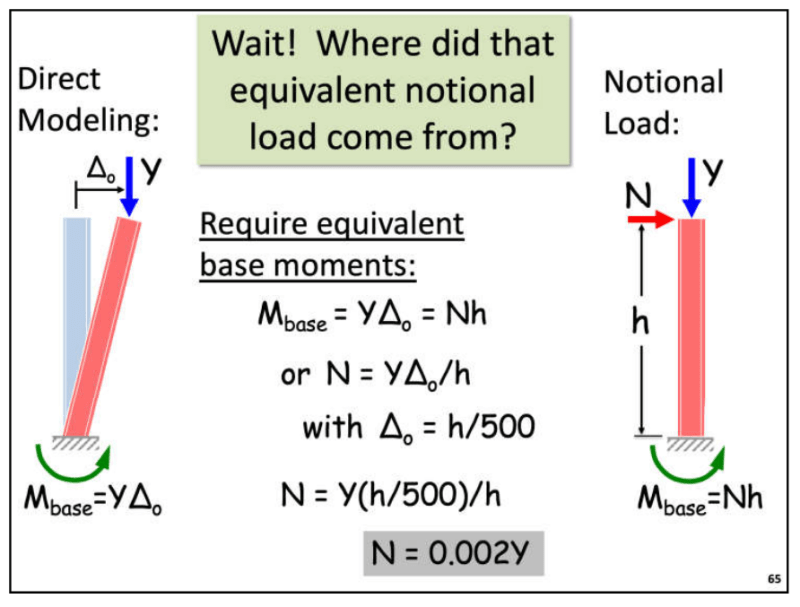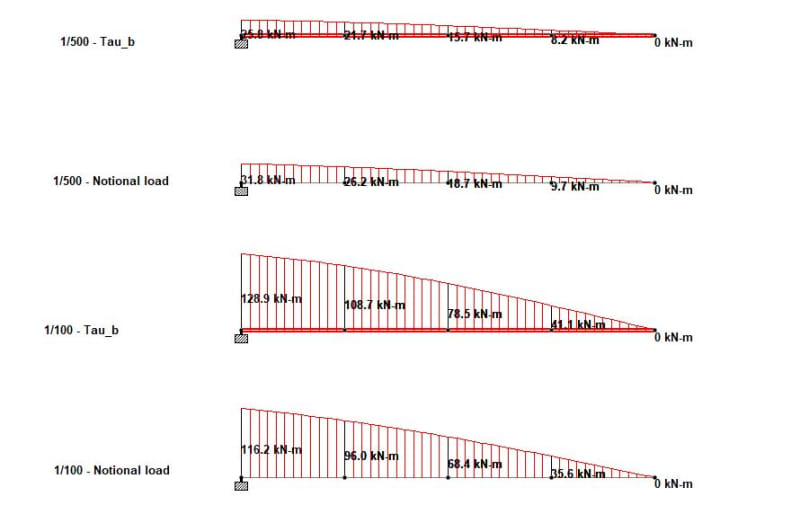Settingsun
Structural
- Aug 25, 2013
- 1,513
Does anyone know the derivation of the additional notional load that can be used instead of the Tau_b stiffness reduction factor? I want to know whether the notional load should be increased if the out-of-plumb is more than the assumed L/500.



